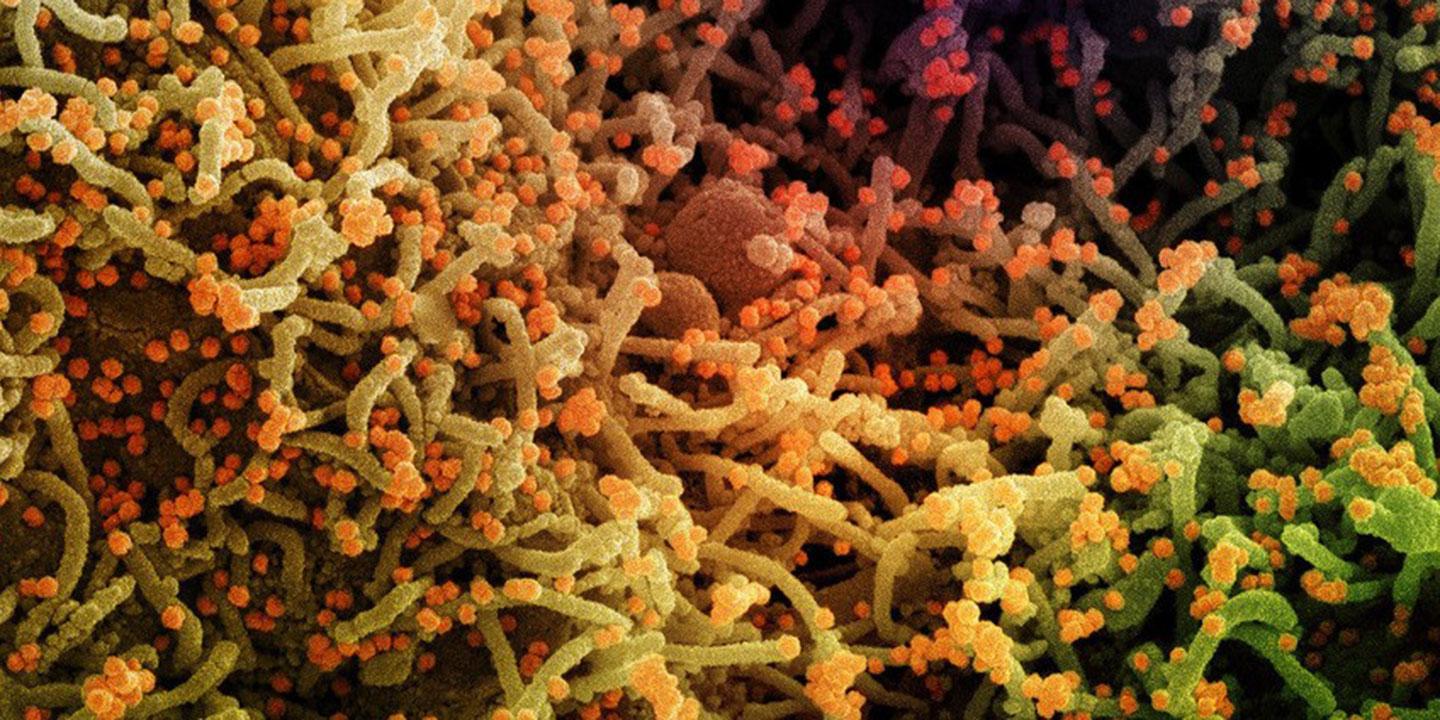Mechanisms of immune system overreaction in Covid-19 identified

Researchers from the University Hospital and EPF Lausanne identify the cGAS-STING signaling cascade as the driver of the vigorous interferon responses in Covid-19.
In response to a viral infection, our body produces messenger substances, including so-called interferons. Individuals affected by Covid-19 who fail to establish this initial defence often quickly become severely ill with pulmonary complications as a result of high interferon levels. This leads to a destructive overreaction of the immune system. The recently published findings of the NRP 78 research group led by Michel Gilliet and Andrea Ablasser of the University Hospital and EPF Lausanne explain this phenomenon and open up new therapeutic perspectives.
The researchers examined skin samples from Covid-19 patients with a severe course of the disease, which manifested itself in the form of skin lesions. Notable among these were not only increased levels of interferons, but also increased numbers of macrophages and their associated genes. These results are consistent with studies of lung tissues, suggesting an analogous disease mechanism in different organs.
The appearance of free genetic material in the cell fluid, the DNA normally found in the cell nucleus, led the researchers to the cGAS-STING signaling cascade. This is triggered by free DNA in the cytosol and leads to the production of interferons and other cytokines. In vitro experiments with the addition of a STING inhibitor significantly lowered interferon concentrations. Further experiments revealed that covid-19 leads to mitochondrial dysfunction in endothelial cells, which also results in free-floating DNA, triggering the cGAS-STING cascade. In addition to interferon production, the cascade also leads to programmed cell death, which in turn triggers cGAS-STING activities in surrounding macrophages. Studies of lung tissue from deceased patients showed that in rapidly progressing disease, cGAS-STING activity is also high in the lungs and thus could cause organ damage there as well.
In the mouse model, STING inhibitors showed high efficacy in both prophylactic and therapeutic administration. While viral replication remained unchanged, a reduction in the inflammatory response and less cell death was observed. The inhibitor could prevent severe disease and even death.
The experiments revealed an important mechanism of innate immunopathogenicity in response to SARS-CoV-2. Infection can lead to intrinsic activation of endothelial cells, which then produce interferons and subsequently induce cell death. This activates macrophages, which also initiate interferon production. Thus the cGAS-STING signaling cascade represents a promising target in terms of preventing and treating severe disease progression. The study paves the way for the development of new treatments that specifically block this pathological inflammatory process in severe cases of the disease.
